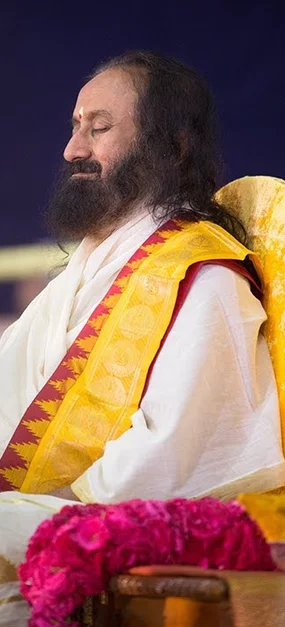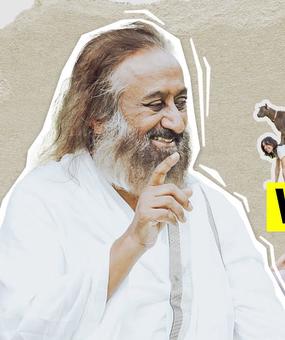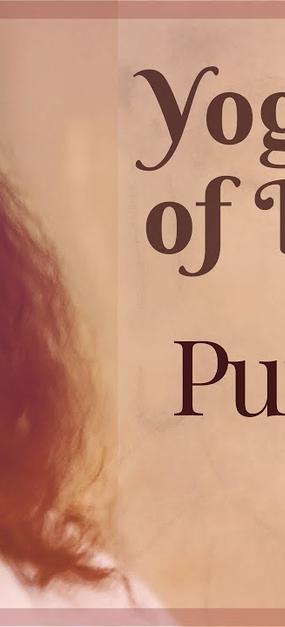“When the mind is still, it gets the power to fulfill any thought.”
Gurudev Sri Sri Ravi Shankar
What is pranayama? Pranayama essentially means working in the dimension of prana. Prana is the vital energy needed by our physical and subconscious layers, without which the body would perish. It is the prana or life force in us that nourishes the mind and keeps the body alive.
What is pranayama?
The fourth anga (limb) of yoga is referred to as pranayama and is frequently practiced with pranayama yoga. It is said that by controlling your breath, you can control the power of your mind. The term “Pranayama” is derived from the Sanskrit terms “Prana” and “Ayama”, translating to “breath” and “expansion”. Yogic breathing exercises can help you control your life force, also known as the prana.
Pranayama is a deep breathing exercise that dates back to thousands of years and comes from Indian yogic traditions. It involves regulating your breath in different lengths, frequencies, and durations. The goal is to connect your body and mind through pranayama. Apart from cleansing your body of toxins, it also supplies the body with ample oxygen and is intended to have physiological effects that promote healing. A cycle of pranayama yoga has three stages:
- Puraka (Inhalation)
- Kumbhaka (Retention)
- Rechaka (Exhalation)
What is prana?
Despite having a connection to the breath, prana is not the breath. Prana is an energy that flows through thousands of subtle energy channels called nadis and energy centers called chakras. It creates an aura around the body. The quantity and quality of prana and the way it flows through the nadis and chakras determine one’s state of mind.
The movement and energy of prana, the cosmic energy flowing through us and around us, is influenced by our actions, thoughts, and especially the way we breathe.
If the prana level is high and its flow is continuous, smooth, and steady, the mind remains calm, positive, and enthusiastic. However, the lack of knowledge and attention to one’s breath could cause partial blockages in the nadis and chakras. Unfortunately, this leads to a jerky and broken prana flow. As a result, one experiences increased worries, fear, uncertainty, tensions, conflict and other negative qualities. Every problem first generates in the subconscious and then surfaces on the physical level. Sickness shows up in your prana (pranic sheath) much before you get physically sick.
Types of pranayama
The ancient Indian sages knew that deep breathing exercises were simple to practice and can bring great relaxation to the body and mind. Now that we’ve established what pranayama is, let’s look at the different types of pranayama we can practice. These various types of breathing techniques can be practiced easily and at any time of the day on an empty stomach.
Let’s learn about the types of pranayama & how to do pranayama one by one.
1. Bhramari Pranayama
Is your mind buzzing with activity? Can’t stop thinking about what someone said about you? Find a quiet corner and try this type of pranayama to apply brakes to the buzzing mind. This breathing technique is a boon for those with hypertension.
Bhramari Pranayama, commonly referred to as Humming Bee Breath, is a yogic breathing exercise that calms the nervous system and aids in reconnecting us with our most genuine selves. This pranayama for beginners is named after the soft humming of a bee and is made at the back of the throat during practice.
Learn more about Bhramari Pranayama and how to do this pranayama.
2. Kapalbhati
Kapalbhati is a yogic breathing exercise whose name is derived from the Sanskrit terms Kapal, meaning skull, and bhati meaning “to shine”.
Among the various deep breathing exercises, this pranayama yoga is considered the most important. One of the benefits of pranayama is detoxification of the body and clearing of the energy channels.
Kapalbhati is for people with intermediate to advanced breathing levels. It energizes your circulatory and neural systems while strengthening your chest and cleansing your abdominal organs.
3. Bhastrika Pranayama
Feeling low on energy? Three rounds of Bhastrika Pranayama (bellows breath) will get your energy levels soaring! So, what is pranayama Bhastrika?
Bellows Breath, also known as Bhastrika Pranayama, is a stimulating deep breathing exercise that resembles stoking a fire with a constant stream of air. The Sanskrit name Bhastrika, which means “bellows,” refers to the vigorous filling and emptying (inhaling and exhaling) of the lungs and abdomen during this exercise. It stimulates the body’s and mind’s internal fire, promoting healthy digestion on all levels.
Learn more about the benefits of Bhastrika pranayama and how to do it
4. Nadi Shodhan Pranayama
Can’t concentrate on the task at hand? Try nine rounds of Nadi Shodhan Pranayama (alternate nostril breathing technique) followed by a short 10-minute meditation session. Nadi Shodhana Pranayama calms and centers the mind by bringing harmony between both the hemispheres of the brain.
Alternate Nostril Breathing, often referred to as Nadi Shodhan, is a powerful deep breathing exercise with multiple benefits of pranayama.
Shodhana in Sanskrit means “purification,” while nada refers to “channel or flow”. Therefore, the main goal of Nadi Shodhana is to balance the system as a whole while cleansing and purifying the channels of the mind-body. It balances all three doshas and is a good exercise for just about everyone.
Know more about Nadi Shodhana in detail and how to do this type of pranayama
Benefits of pranayama
We’ve learnt what pranayama is and what are the types of pranayama. Let’s focus on the benefits of pranayama now. The regular practice of deep breathing exercises can completely change one’s quality of life.
The advantages of yogic breathing exercises for health have been examined in numerous medical and scientific publications. Even though each type of pranayama technique has its own distinct features and results, it’s vital to remember the general benefits of pranayama. If you intend to practice pranayama for any of these advantages, thoroughly investigate the technique first in order to apply it correctly and be conscious of any precautions or negative effects.
General benefits of pranayama:
- Increases and enhances the quantity and quality of prana, thereby increasing our energy levels
- Clears blocked nadis and chakras, thereby expanding our aura and heightening the spirit
- Makes one energetic, enthusiastic, calmer and positive. Such a state of mind helps us in making better decisions, having mental strength when dealing with adversities and feel happier
- Brings harmony between the body, mind, and spirit, making one physically, mentally and spiritually strong
- It brings clarity to mind, and good health to the body
Meditation & pranayama help us express ourselves better
“The most difficult thing to do is to express our feelings correctly and to understand others’ feelings correctly. Lacking this skill is the biggest issue faced by society today, and this has to be developed. It is never perfect; some ups and downs do happen in this matter. Like, what we feel, we cannot express fully and cannot understand correctly what others feel.
This keeps happening in life, but when we become more calm and happy, we are able to understand others’ minds more and more. That’s why it is very necessary to do meditation, pranayama, etc. That gives more inner clarity, and then we feel that others can understand us better, and also we can express our views better.”
~ Gurudev Sri Sri Ravi Shankar
“Our breath is linked to our emotions. For every emotion, there is a particular rhythm in the breath. So, when you cannot directly harness your emotions, with the help of the breath, you can do that.
If you are in a theatre, you would know that a director asks you to breathe faster when you have to show anger. If you have to show a serene scene, the director would tell you to breathe softer and slower. If we understand the rhythm of our breath, we are able to have a say over our mind. We can then win over any negative emotions like anger, jealousy, greed, and are able to smile more from our heart.”
~ Gurudev Sri Sri Ravi Shankar on the connection between breath & emotions
Note: Practicing Yoga helps develop the body and mind, yet is not a substitute for medicine. It is essential to learn and practice yoga under the supervision of a trained Yoga teacher. In case of any medical condition, practice yoga only after consulting your doctor and a Sri Sri Yoga teacher. Since the pranayamas or breathing exercises deal with the subtle life force, experimenting with these techniques is not advisable.




















